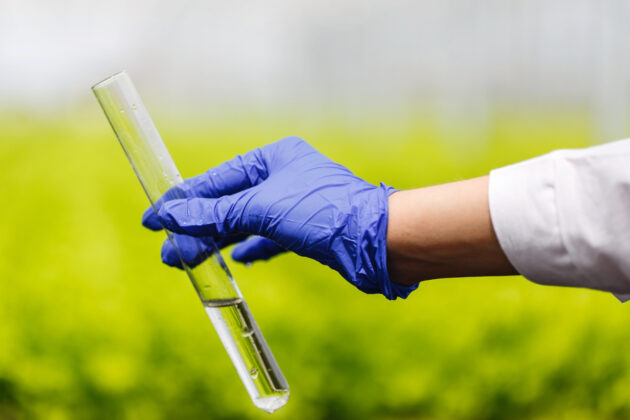
Table of Contents
Table of Contents
- Introduction to Sustainable Water Management
- The Importance of Water Conservation
- Innovative Water Management Techniques
- The Role of Technology in Water Management
- Community Involvement and Education
- Economic Impacts of Water Management
In today’s rapidly changing world, sustainable water management is not just a trendy term; it’s an essential practice that deeply influences our environment, economy, and social well-being. The intricate process of Fairfax County water treatment exemplifies ongoing efforts to refine and enhance water management systems for greater efficiency. By integrating sustainable practices, we aim to conserve one of our most precious resources and ensure its availability for generations yet unborn. Sustainable water management addresses multiple facets, from conserving water to implementing cutting-edge technologies, all vital for our planet’s health and our communities’ prosperity.
Fairfax County’s water treatment process involves sourcing water from the Potomac and Occoquan Rivers, which is then purified to meet stringent health and safety standards. The county utilizes advanced filtration systems, including activated carbon and ultraviolet disinfection, to remove impurities and harmful microorganisms. The treated water is continuously monitored to guarantee it meets or exceeds federal and state water quality regulations before being distributed to residents.
Introduction to Sustainable Water Management
Sustainable water management comprises a comprehensive set of strategies aimed at utilizing and preserving water resources in a manner that is environmentally and socially responsible. It’s all about harmonizing the demands of various populations with a commitment to preserving natural water environments. Implementing these strategies enables the mitigation of adverse effects such as ecosystem degradation and water scarcity. By managing water sustainably, we ensure that water is available for essential uses—agriculture, industrial activities, and domestic consumption—without compromising the environment’s natural balance. Proper management means embracing a multifaceted approach that combines conservation, technological innovation, and community involvement to create a sustainable water system.
The Importance of Water Conservation
Water conservation stands as a critical component of sustainable water management, primarily because of the increasing scarcity of this resource. Although water covers a substantial part of our planet, only a small segment is suitable for human consumption. According to the Global Water Crisis Overview, billions face water scarcity each year despite its abundance. This issue arises from various factors, including climate change, population growth, and inefficient usage. Encouraging the judicious use of water through conservation reduces wastage, preserves ecosystems, and decreases the energy needed for water processing and transport. Thus, conservation is not merely an environmental issue but also a requisite for economic and social stability in any developing or developed region.
Innovative Water Management Techniques
In addressing water scarcity and usage challenges, innovation in water management techniques is imperative. Techniques such as rainwater harvesting involve capturing and storing rainwater for future usage, providing one of the simplest yet most effective ways to augment water supply. Desalination, on the other hand, transforms seawater into potable water, opening vast possibilities for cities near coastlines to address their water shortages. Advanced wastewater treatment involves cleaning used water to be repurposed safely, effectively doubling water utility in various sectors. These innovative methods demonstrate practical responses to the common challenges faced in water management, allowing communities to thrive sustainably. Implementing such techniques not only alleviates current stresses on water systems but also sets a foundation for long-term sustainability.
The Role of Technology in Water Management
The modern technological landscape offers remarkable tools that aid in water management and conservation efforts. Advances in sensors and the Internet of Things (IoT) have ushered in a new age of smart water management systems. These technologies allow for precise monitoring of water usage and immediate detection of leaks, significantly reducing water wastage. According to the Role of IoT in Water Management, smart technologies facilitate efficient water allocation and assist utilities in managing resources better than ever before. Artificial intelligence also plays a crucial role in optimizing irrigation schedules and predicting demand based on various factors like weather patterns. Embracing these technologies can drive significant improvements in how water is handled, directly supporting sustainability goals.
Community Involvement and Education
One often overlooked aspect of water management is the critical role that communities play. Grassroots initiatives and public awareness campaigns have proven effective in transforming how water is perceived and managed at the local level. By fostering a deep understanding of water issues, educational programs empower individuals and communities to adopt conservation behaviors actively. Participation in community-led initiatives such as local clean-up drives or water conservation workshops can lead to significant improvements in sustainability efforts. These activities encourage collective responsibility, reinforcing the idea that every individual’s action counts towards a greater environmental impact. Moreover, educational initiatives can inspire future generations to innovate and care for their water resources, ensuring long-term sustainability.
Economic Impacts of Water Management
Implementing sustainable water management is not just about ecological benefits; it also carries substantial economic advantages. Efficient water management can reduce costs associated with water acquisition and treatment, offering savings for municipalities and industries. Infrastructure projects focusing on water conservation, though initially costly, can mitigate future expenses and generate jobs, leading to economic growth. Cost-benefit analyses often reveal that the long-term savings and benefits far exceed the preliminary investments required. Moreover, markets focused on developing and deploying water-saving technologies are growing rapidly, creating new opportunities for economic development and positioning regions that prioritize sustainable water management at the forefront of innovation and stability.
